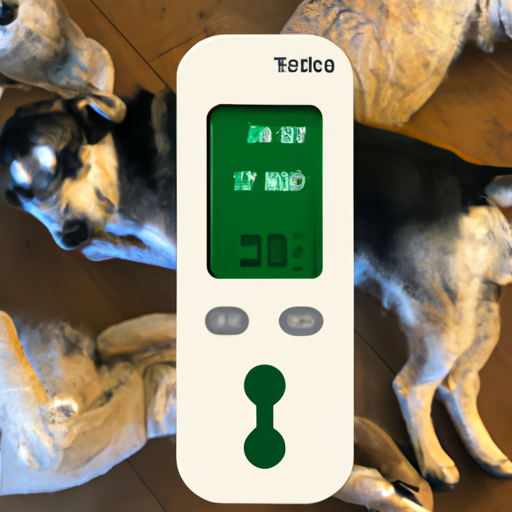As a caregiver for your furry friend, it’s essential to understand their physical health parameters, including body temperature.
Understanding Your Dog’s Normal Temperature
A dog’s normal body temperature is typically higher than a human’s. While our normal body temperature sits around 98.6°F (37°C), your dog’s average temperature should be anywhere from 101°F to 102.5°F (38.3°C to 39.2°C).
If you notice your dog’s body temperature falling below or rising above this range, it could indicate a health problem.
How to Take Your Dog’s Temperature
Taking your dog’s temperature might seem like a daunting task, but with the right tools and approach, it can be done easily and effectively. Here’s a step-by-step guide:
- Purchase a digital rectal thermometer.
- Apply a lubricant to the thermometer.
- Insert the thermometer into your dog’s rectum.
- Wait until the thermometer beeps.
- Remove the thermometer and check the reading.
Remember to comfort your dog throughout this process and reward them afterwards.
Factors Affecting Your Dog’s Temperature
Several factors influence your dog’s body temperature. You should consider these when determining if their temperature is normal:
- Age: Puppies tend to have higher body temperatures than adult dogs.
- Size: Larger dogs typically have lower body temperatures than smaller dogs.
- Breed: Some breeds have higher body temperatures due to their thick coats.
Common Illnesses That Can Affect Your Dog’s Temperature
Fever in dogs can be a symptom of various illnesses, including:
- Infections (bacterial, viral, or fungal)
- Heatstroke
- Toxic exposure
- Certain chronic diseases
Hypothermia can also occur in dogs due to prolonged exposure to cold temperatures, wetness, or severe illness or injury.
What to Do If Your Dog’s Temperature Is Not Normal
If your dog’s temperature falls below 99°F (37.2°C) or rises above 103°F (39.4°C), consult a veterinarian immediately. It’s crucial to identify and treat potential health problems early.
Frequently Asked Questions
Q: How often should I check my dog’s temperature?
A: Unless your dog shows signs of illness, you generally don’t need to check their temperature regularly.
Q: What are the signs of fever in dogs?
A: Signs can include lethargy, loss of appetite, shivering, or unusual behavior.
Q: Can I use a human thermometer for my dog?
A: Yes, but a thermometer specifically designed for dogs would be more accurate and safer.
Q: Should I be worried if my dog’s temperature is 103°F?
A: A temperature of 103°F is slightly above normal and could indicate a mild fever. Consult your vet for advice.
Q: How can I prevent hypothermia in my dog?
A: Keep your dog warm and dry, especially during cold weather. Avoid prolonged exposure to cold temperatures.



